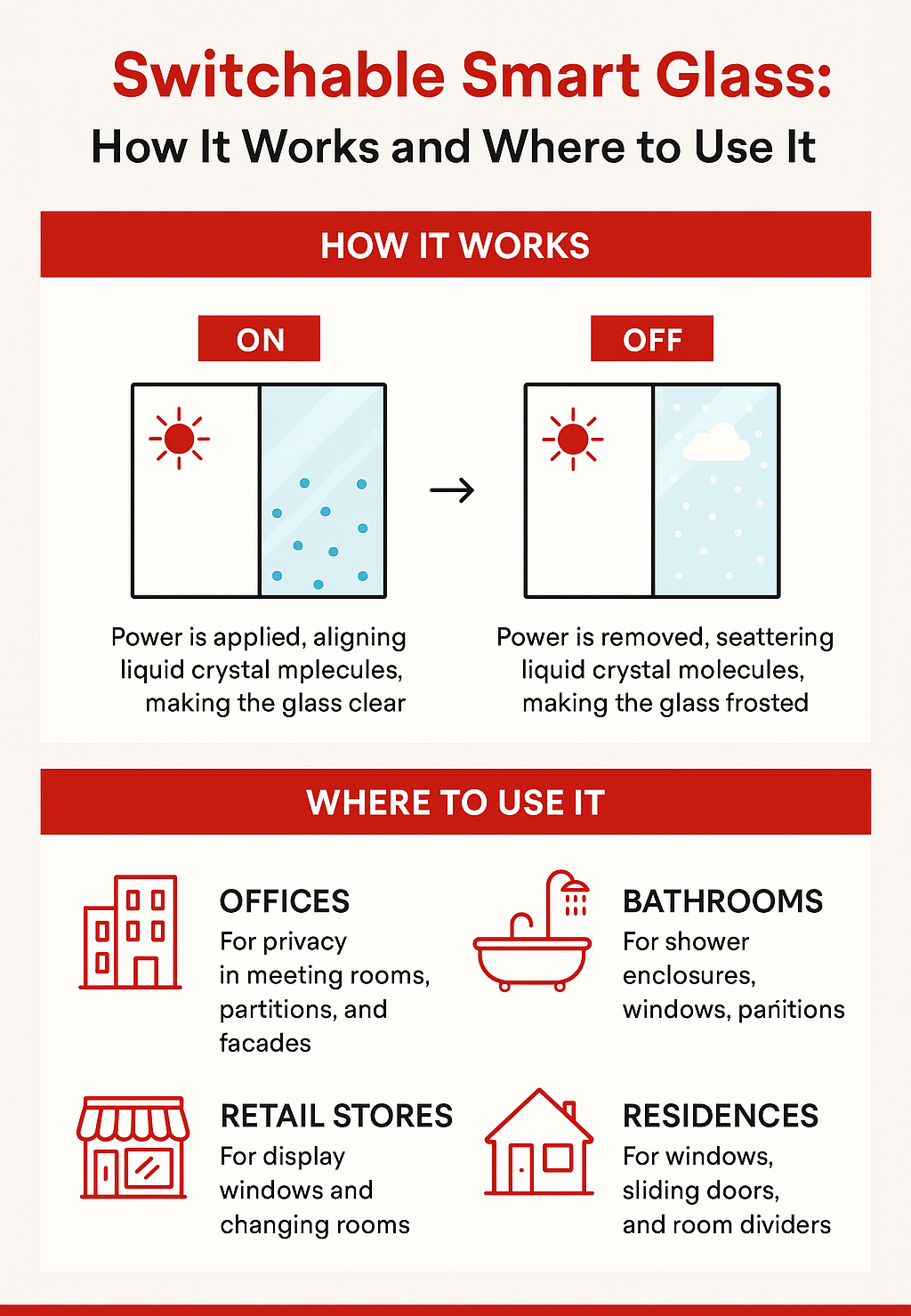Switchable Smart Glass How It Works and Where to Use It
Innovation Feature · 2025
Read time: ~6-7 mins · Updated: 27 Sep 2025
Smart glass that switches from opaque to clear with the flip of a switch or app is fast becoming a premium design and privacy solution.
“Switchable smart glass” offers modern aesthetics, variable privacy, and control — ideal for homes, offices, medical settings and more.
Here’s how it works, what it costs, and where it shines.

How the technology works
Switchable smart glass typically uses **PDLC (Polymer Dispersed Liquid Crystal)** film sandwiched between panes of glass. When an electrical current is applied, the PDLC aligns the liquid crystals, making the pane transparent. Remove the current, and the crystals scatter, turning it opaque.
- Layers: two glass panes, the PDLC film, and sometimes a protective laminated or toughened outer layer.
- Power source: typically low voltage, wired small controllers or smart switch integration.
- Speed: transitions in less than a second.
- Light control: opaque mode diffuses light; clear mode allows full visibility.
Key benefits
- Privacy on demand — great for meeting rooms, bathrooms, or street-facing windows without needing blinds or curtains.
- Sleek, modern look with minimal hardware.
- Potential energy savings by reducing need for additional shading or decorative elements.
- Flexibility — control via wall switch, remote, or smart home integration.
Where to use switchable smart glass
- Office partitions and meeting rooms for privacy and openness as needed.
- Homes: bathrooms, bedrooms, and street-facing windows.
- Healthcare: patient room privacy, operating theatres, or waiting areas.
- Retail and hospitality: display windows, bars, restaurants, or conference spaces.
Things to consider
- Cost is higher than static glass because of the PDLC film and electrical components.
- Installation requires wiring and switch/inverter access.
- Some light leakage in opaque mode—may need film finish or frame design to reduce halo effect.
- Maintenance: ensure controller and power supply are protected and correctly sourced.
If you’re considering this technology, then check custom glass solutions and tempered / safety glass which can be combined with smart glass layers.
References & further reading:
The Guardian: Smart Glass Explained,
ScienceDirect: PDLC Technology,
Cogglas Smart Glass Products
Ready to upgrade with smart glass?
Frequently asked questions
How long does switchable glass last?
Typical PDLC film lifespan is 10-15 years depending on usage, environment, and quality of electrical components.
Is switchable glass energy efficient?
It helps reduce need for shading and blinds, and in opaque mode can reduce solar gain. However, the energy to power the film must be considered.
Does it require safety glass?
Yes—if the glass is in a door or low window, safety classifications (toughened or laminated) are often legally required.
Can the glass be retrofitted?
In many cases yes—film-based PDLC layers or retrofit panels exist, but wiring and edge sealing must be properly done.
